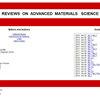开发新的再生骨料混凝土阻尼比预测模型:纳入改性外加剂和碳化效应
IF 3.6
4区 材料科学
Q2 MATERIALS SCIENCE, MULTIDISCIPLINARY
引用次数: 0
摘要
再生骨料混凝土(RAC)已被广泛应用于实际工程建设中。然而,建筑物抵抗风引起的振动和地震影响的能力对建筑物的安全起着重要作用。当务之急是确保再生混凝土在允许强度范围内仍具有良好的抗震能力。通过对再生混凝土试件进行阻尼试验,结果表明与天然骨料混凝土相比,再生混凝土的阻尼性能得到了更好的改善。此外,还可以确定再生骨料内部因素和外部环境条件对阻尼性能的影响,并构建相应的阻尼比预测模型。然而,目前的预测模型在理论和实践上仍存在局限性。现有的阻尼比预测模型的自变量跨度较大,没有考虑实际环境中随着时间推移逐渐产生的碳化效应。为了克服这些局限性,本文提出了一种新的阻尼比预测模型。基于再生集料(RA)的替代率和激振力的振幅,考虑了改性外加剂和碳化对阻尼性能的影响,并构建了相应的模型预测公式。此外,还从试样剖面的宏观方面和电子显微镜测试的微观方面进一步论证和解释了影响机理。研究发现,考虑到强度和成本因素,当再生骨料(RA)的替代率为 40% 时,再生混凝土仍具有良好的阻尼性能。本文章由计算机程序翻译,如有差异,请以英文原文为准。
Development of a new damping ratio prediction model for recycled aggregate concrete: Incorporating modified admixtures and carbonation effects
Recycled aggregate concrete (RAC) has been widely used in practical engineering construction. However, the ability of buildings to resist wind-induced vibration and earthquake effects plays an important role in building safety. It is urgent to ensure that recycled concrete still has good anti-vibration ability within the allowable strength range. By conducting damping tests on recycled concrete specimens, the results show that the damping performance of RAC is better improved compared with natural aggregate concrete. Moreover, the influence of internal factors of recycled aggregates and external environmental conditions on damping performance can be determined, and corresponding damping ratio prediction models can be constructed. However, the current prediction models still have limitations in theory and practice. The existing damping ratio prediction models have a large span of independent variables and do not consider the gradual carbonation effect in the actual environment over time. To overcome these limitations, a new damping ratio prediction model is proposed. Based on the replacement rate of recycled aggregates (RAs) and the amplitude of excitation force, the influence of modified admixtures and carbonation on damping performance is considered, and the corresponding model prediction formula is constructed. In addition, the influence mechanism is further demonstrated and explained from the macroscopic aspect of specimen profile and the microscopic aspect of electron microscopy tests. It is found that, considering both strength and cost factors, recycled concrete still has good damping performance when the replacement rate of recycled aggregates (RAs) is 40%.
求助全文
通过发布文献求助,成功后即可免费获取论文全文。
去求助
来源期刊

Reviews on Advanced Materials Science
工程技术-材料科学:综合
CiteScore
5.10
自引率
11.10%
发文量
43
审稿时长
3.5 months
期刊介绍:
Reviews on Advanced Materials Science is a fully peer-reviewed, open access, electronic journal that publishes significant, original and relevant works in the area of theoretical and experimental studies of advanced materials. The journal provides the readers with free, instant, and permanent access to all content worldwide; and the authors with extensive promotion of published articles, long-time preservation, language-correction services, no space constraints and immediate publication.
Reviews on Advanced Materials Science is listed inter alia by Clarivate Analytics (formerly Thomson Reuters) - Current Contents/Physical, Chemical, and Earth Sciences (CC/PC&ES), JCR and SCIE. Our standard policy requires each paper to be reviewed by at least two Referees and the peer-review process is single-blind.
 求助内容:
求助内容: 应助结果提醒方式:
应助结果提醒方式:


